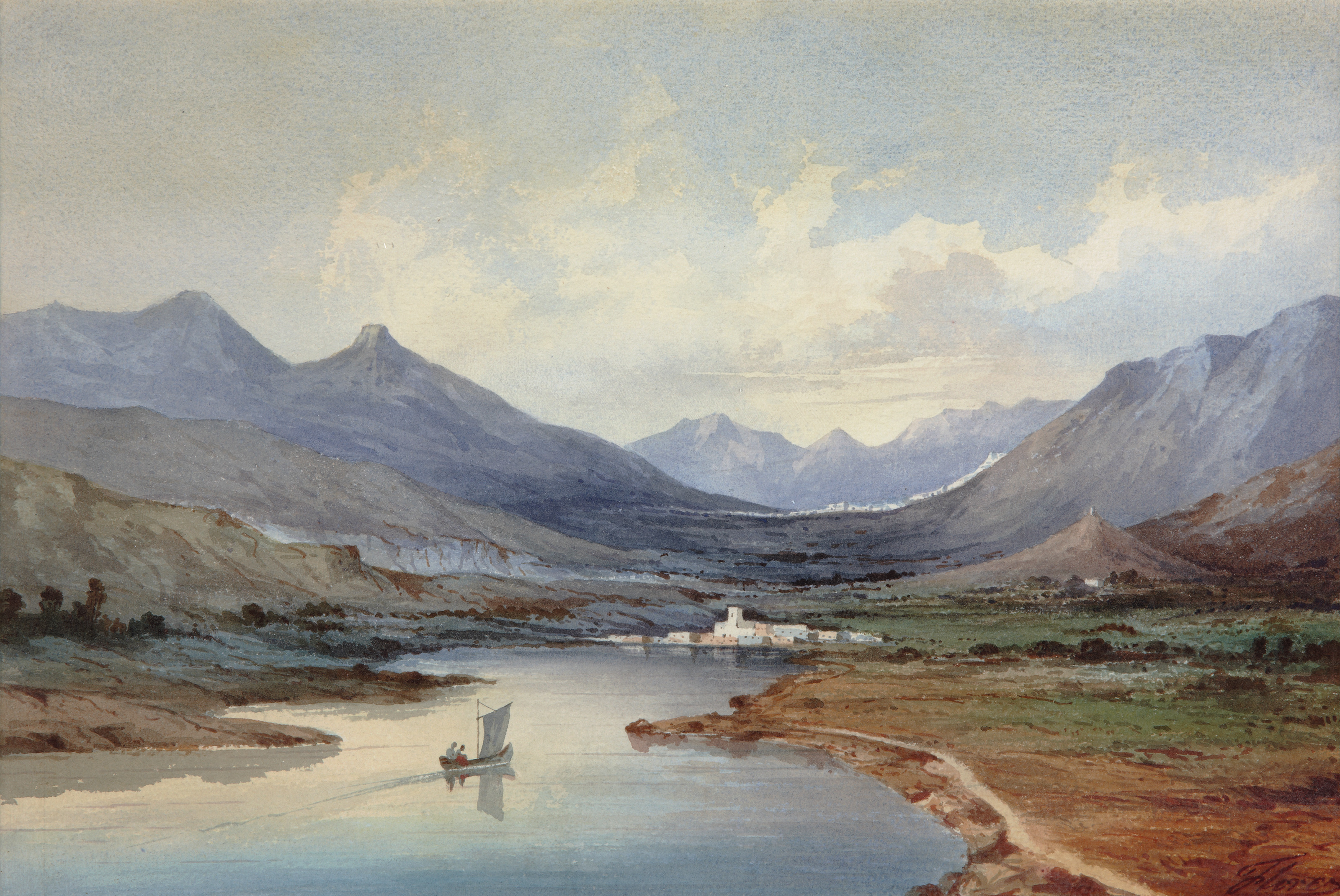
Eduardo Flórez Ibáñez
Tétouan Estuary
s.f.-
Watercolour on paper
25.5 x 38.5 cm
CTB.1995.60
-
© Colección Carmen Thyssen-Bornemisza en préstamo gratuito al Museo Carmen Thyssen Málaga
These eight watercolours belong to a series of twelve, of which numbers 6, 10, 11 and 12 are not featured. The series came from the household of General Juan Prim y Prats. Each was painted from life while the painter was in Tétouan, probably when he was doing military service in Morocco. The series is not known to have been a commission and the fact that the themes are not about war makes it unlikely that they were painted between 1859 and 1860, i.e. the date of the War of Africa, where Prim was commanderin- chief. Rather they seem more consonant with the taste for exotic Orientalist views and themes which became widespread after the war, and thanks to the prestige of Fortuny, who had witnessed the conflict.
The numeration of the first watercolours shows the city gradually drawing closer, and we see that the atmosphere in the landscapes has been captured successfully. In the case of Tétouan Estuary the greyish blues of the peaks in the distance and the beautiful whitish blue of the water harmonise perfectly with the green banks of the middle area and the white of the village at centre. Meanwhile, all is bathed in a greyish light which the sky reflects in an atmosphere of great radiance. Prominent in Road to Tétouan are the lushness of the vegetation in the lower half (with the picturesque small figure), the horizontal line in the distance, and the subdued colour range of the sky. In Rif Mountains on the Road to Tétouan Flórez captured the vivacity of those expressive grey-blue peaks in contrast with the delicacy of the small figures and trees, with the prominence of sky and light again repeated. The view from a distance of Tétouan shows similar features of a landscape bathed in greyish light. However, when we enter the city, the quality of the watercolours diminishes, due to Flórez’s obvious limitations when reproducing interiors and his awkwardness when attempting to bring perspective lines to life. There is still some light in Street in Tétouan, despite the drawing’s scant appeal – with its very unlikely engrailed arches – and the poorly executed shadows. The clumsiness of the perspective is even more pronounced in A Mosque, where the improbable spatial distribution is not redeemed by the admittedly rather fine picturesqueness of the figures and details. It is true that the diagonal view of the bays in the Great Mosque provides a more convincing angle for capturing the space within, but furniture such as the nimbar is not wellsuited to the area and the shadows are not adequately defined. Regarding the last of the interiors, The Algerian’s Cafe, although the transparency of the space makes a certain atmosphere of light possible, once again the geometry of the perspective is not completely convincing, as for example in the case of the ambiguous placing of the diaphragm arch and – as a result – the end of the raised area on the right, which has not been rendered accurately.
Esteban Casado